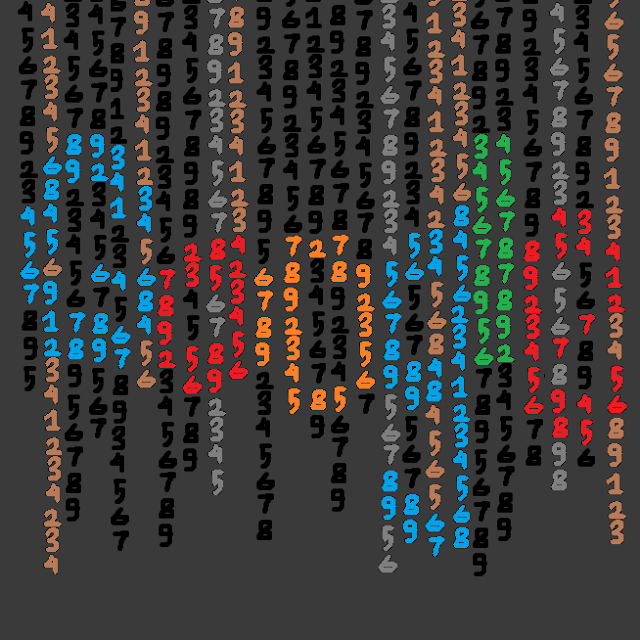The Untold Origins of Afrobeats Music Genres - A Cultural Symphony Rooted in Revolution - Blog No. 74
Imagine walking through the lively streets of Lagos on a hot Saturday night—the scent of grilled suya in the air, taxis honking, and from every open window and roadside bar, a familiar rhythm pulses. It's bold. It's vibrant. It's Afrobeats. But what if I told you the globally celebrated sound that’s dominating playlists, TikTok trends, and Billboard charts has roots that dig far deeper than Burna Boy, Wizkid, or Davido?
Welcome to the untold origin story of Afrobeats—a tale of rebellion, rhythm, and relentless reinvention.
Related
The 10 Best Music Genres Globally in 2025 - Where Culture, Data, and Beats Collide - Blog No. 70
🎵 What Is Afrobeats, Really?
Before diving into the roots, let’s clear the air.
Afrobeats (with an s) is not the same as Afrobeat (without the s). Afrobeat, pioneered by the legendary Fela Kuti in the 1960s and '70s, was a politically charged, jazz-infused genre. Afrobeats, in contrast, is a modern umbrella term for the diverse, pop-oriented music emerging from West Africa—especially Nigeria and Ghana—starting in the early 2000s.
Think of Afrobeat as the ancestor—wise, bold, revolutionary. Afrobeats is its dynamic descendant—digital, danceable, and endlessly evolving.
🪘 The Ancient Pulse: African Rhythms Before Afrobeats
Africa has always been a continent of sound. Long before colonization or the invention of recording technology, music was the lifeblood of community and culture.
Drums, flutes, koras, balafons—each told a story, marked a ritual, or celebrated a harvest. In Nigeria, traditional Yoruba music featured talking drums that mimicked the tone and rhythm of human speech. In Ghana, highlife music—known for its jazzy horns and guitar riffs—served as the heartbeat of urban parties in the 1950s.
These early musical traditions weren't just entertainment; they were a form of communication, storytelling, and resistance. And they laid the rhythmic blueprint for what would eventually become Afrobeats.
🇳🇬 Lagos, the Melting Pot
In the 1960s and '70s, Lagos began to transform. As Nigeria gained independence from British colonial rule, a cultural explosion followed. Musicians experimented. Sounds collided.
Enter Fela Kuti.
Fela fused Yoruba rhythms with jazz, funk, and psychedelic rock. He added socially conscious lyrics and political fire. Thus, Afrobeat was born—a genre that gave voice to the oppressed and challenged the establishment. Songs like Zombie and Water No Get Enemy weren’t just catchy—they were protest anthems.
But after Fela’s era, something else started brewing. Nigeria’s cities grew more chaotic, technology more accessible, and youth culture more global. The world was shifting—and so was its music.
🌍 A Global Sound Shaped Locally
In the 1990s and early 2000s, Western genres like hip-hop, R&B, dancehall, and reggae began influencing African artists. MTV Base and Channel O became cultural pipelines. African youth began infusing their traditional rhythms with global sounds.
That’s when artists like 2Baba (formerly 2face Idibia) came in with hits like African Queen—a ballad that blended reggae-style production with Afro rhythms. D'banj and Don Jazzy followed, combining Yoruba lyrics with American-style beats, bringing forth songs like Oliver Twist, which went viral in the UK.
This was the real genesis of Afrobeats—a new genre born from global influences but deeply rooted in African essence.
💻 The Internet Changed Everything
If Fela’s saxophone spoke to a nation, the internet screamed to the world.
By the 2010s, Afrobeats had moved from clubs in Lagos to dorm rooms in London, to block parties in Brooklyn. Platforms like YouTube, SoundCloud, and later Audiomack and Boomplay helped African artists reach global audiences without needing record deals from the West.
Songs like Wizkid's “Ojuelegba” or Davido's “Fall” found love not only in Nigeria but across Europe and the Americas. International artists like Drake, Beyoncé, and Major Lazer took notice. Collaborations began. Borders blurred.
Beyoncé’s The Lion King: The Gift album featured an all-star lineup of Afrobeats artists—Burna Boy, Tiwa Savage, Mr Eazi, and more. It was an affirmation: Afrobeats had arrived on the world stage.
🎤 Afrobeats Artists: The Modern-Day Griots
Let’s talk about the storytellers behind the sound:
-
Burna Boy blends Afrobeat’s activism with modern production. His Grammy-winning Twice As Tall is a spiritual successor to Fela.
-
Wizkid channels emotion through minimal lyrics and melody. His Made in Lagos album is a smooth, soulful Afrobeats journey.
-
Tems brings a haunting, ethereal tone, expanding the emotional range of Afrobeats.
-
Rema and Ayra Starr represent Gen Z, blending trap, house, and Afrobeats to appeal to a hyper-digital audience.
These artists are more than musicians—they’re cultural ambassadors, introducing African narratives to global ears.
🧬 The DNA of Afrobeats: What Makes It Tick?
Afrobeats isn’t just a sound; it’s a feeling. But technically, here’s what defines the genre:
-
Percussion: Syncopated drum patterns rooted in traditional African rhythms.
-
Call-and-Response: Echoes traditional African oral traditions.
-
Pidgin English/Yoruba/Twi: Multilingual lyrics make it accessible and deeply local.
-
Digital Production: Synth-heavy beats, autotune, and electronic layering.
-
Danceability: If you can’t move to it, it’s not Afrobeats.
The genre is deliberately fluid. It borrows from reggaeton, dancehall, UK grime, amapiano, and trap—yet always maintains a distinctly African identity.
📊 Afrobeats by the Numbers (SEO-Friendly Data)
-
Spotify Streams: As of 2024, Afrobeats artists like Burna Boy and Rema have over 1 billion global streams each.
-
YouTube Influence: Wizkid’s Essence featuring Tems surpassed 180 million views.
-
TikTok Reach: Songs like Calm Down by Rema became dance challenges with over 10 million user-generated videos.
-
Global Tours: Burna Boy became the first African artist to sell out Madison Square Garden.
Sources: Spotify for Artists, YouTube Charts, IFPI Global Music Report 2024.
🌱 Afrobeats’ Impact on Identity and Empowerment
Afrobeats is more than music—it’s a mirror reflecting Africa’s self-confidence.
For decades, Western media painted Africa as a continent of poverty, war, and chaos. Afrobeats flips that script. It celebrates African joy, style, innovation, and swag.
It inspires African diaspora communities worldwide to reconnect with their roots. For a Ghanaian teen in Toronto or a Nigerian student in Paris, Afrobeats is identity—wrapped in bass, beats, and boldness.
🔮 The Future of Afrobeats: What’s Next?
Afrobeats is no longer a “niche” genre—it’s mainstream. But where is it headed?
-
Genre Merging: Expect more fusion with EDM, Latin trap, K-pop, and Indian beats.
-
More Female Voices: Artists like Ayra Starr, Tyla, and Tems are leading a new wave of empowered women in Afrobeats.
-
Cinematic Storytelling: Afrobeats is entering film and gaming, expanding beyond playlists into immersive worlds.
-
AI & Afrobeats: With tools like Suno and Udio, expect collaborations between AI-generated music and African creativity.
The future of Afrobeats is borderless, genreless, and fearless.
Related
🌍 Final Chorus: A Global Anthem, Rooted in Africa
From traditional Yoruba chants to Fela’s revolutionary horns… from street parties in Accra to rooftop raves in New York… Afrobeats has evolved into a global symphony that refuses to be ignored.
It’s the music of resilience, joy, identity, and modern African pride. And while the world continues to dance to it, let’s never forget where it started: in the soul of a continent, in the hearts of its people, and in the rhythm of drums that have echoed for generations.
So next time Essence or Calm Down comes on, turn it up—not just for the vibe, but for the story it carries.



Comments
Post a Comment